Muwekma Ohlone Tribe of the San Francisco Bay Area
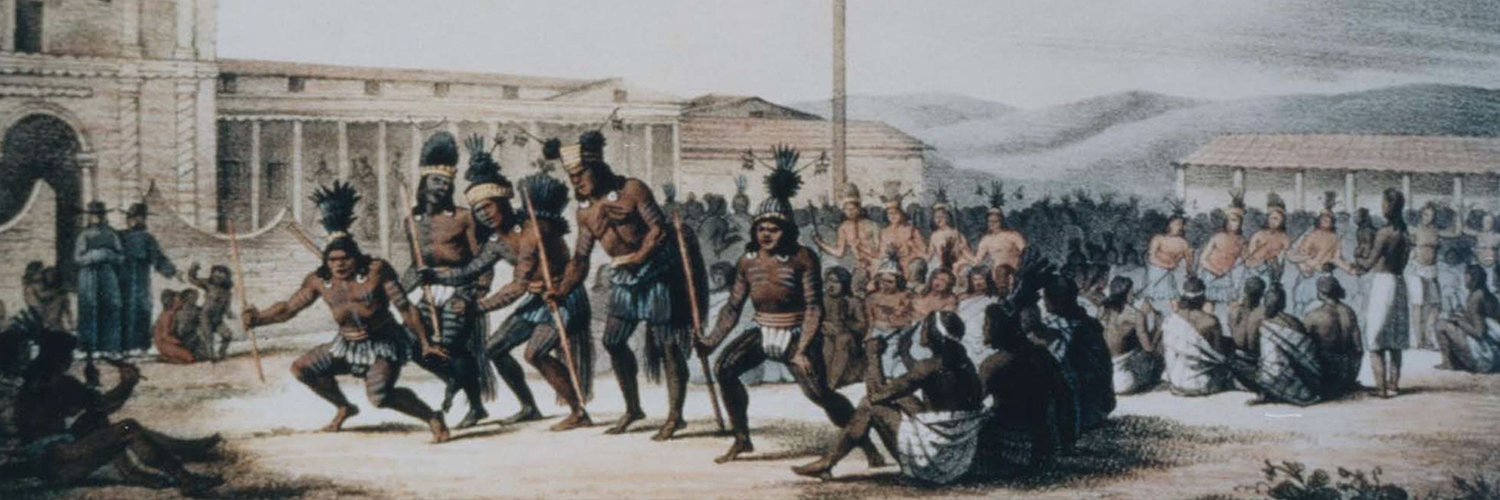
Muwekma Ohlone Tribe of the San Francisco Bay Area in a Nutshell
Honor the legacy of the Muwekma Ohlone Tribe: "Makkin Mak Muwekma Wolwoolum, 'Akkoy Makwarep, Manne Mak Hiswi!" Welcome to our ancestral land, where our roots run deep.
Today, the Muwekma Ohlone Tribe represents the resilient spirit of all surviving American Indian lineages native to the San Francisco Bay region. Our lineage traces back through the Missions Dolores, Santa Clara, and San Jose, and we proudly uphold the heritage of the Federally Recognized Verona Band of Alameda County.
Our ancestral homeland spans across counties: San Francisco, San Mateo, Santa Clara, Alameda, Contra Costa, and parts of Napa, Santa Cruz, Solano. Despite historical challenges, our people persevered, united by the missionization policies of the Catholic Church and the support of the Hispanic Empire.
Today, we stand as a testament to strength, unity, and resilience, honoring our shared heritage and the land we call home.
Products / Services
Muwekma Ohlone Tribe
San Francisco Bay Area
American Indian lineages
Tribal boundaries
Muwekma Ohlone history
Read our Recent Articles
Native Americans – The First, and Still the Best Land Managers
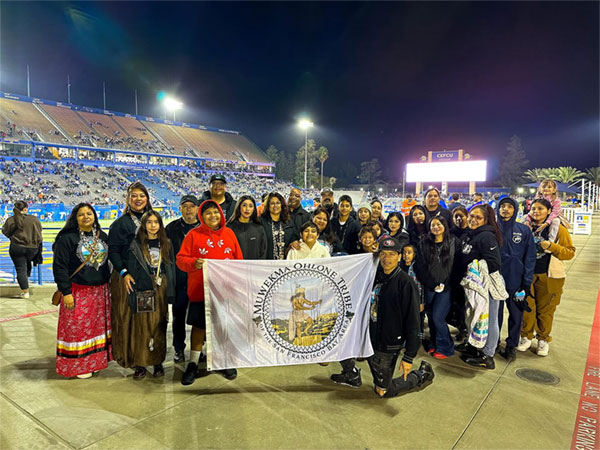 Global warming, pollution, deforestation, and greenhouse gases are all terms that have entered our vocabulary in the last century. The problems that they are causing will, in the words of the U.N Secretary General, lead to an “existential crisis” in the not-so-distant future.
Global warming, pollution, deforestation, and greenhouse gases are all terms that have entered our vocabulary in the last century. The problems that they are causing will, in the words of the U.N Secretary General, lead to an “existential crisis” in the not-so-distant future.
Repatriation of Native American Ancestors Restoring Dignity & Cultural Heritage
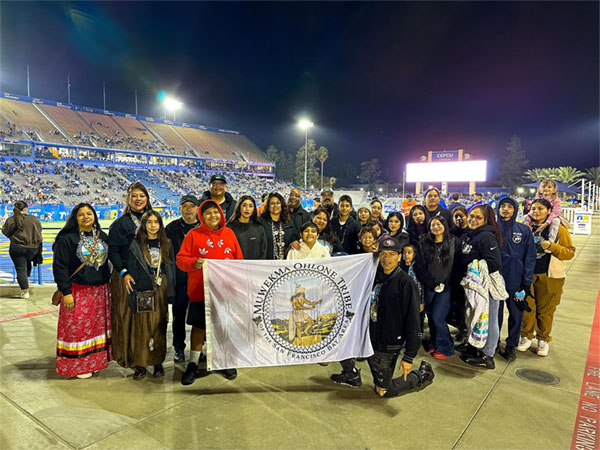 As the newly formed United States continued its westward push across the continent, in the late 1700s and 1800s, the federal and state governments, along with museums and other private institutions encouraged the looting of Native American graves, funerary objects and cultural items.
As the newly formed United States continued its westward push across the continent, in the late 1700s and 1800s, the federal and state governments, along with museums and other private institutions encouraged the looting of Native American graves, funerary objects and cultural items.
Native American Casinos – The Myths and the Facts
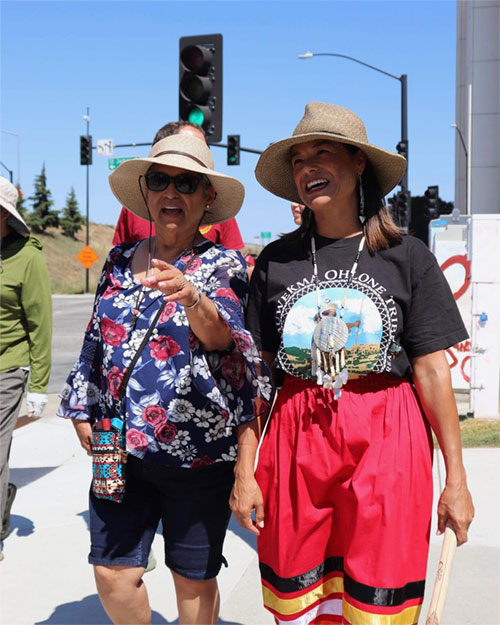 There are a great deal of misconceptions surrounding the casinos built on Native American land. One of the most prevalent is that the tribes make fortunes from gambling and what they do with the money is secret. That in turn leads to the myth that the money is used to fund luxurious lifestyles for those who run the casinos. The facts are very different.
There are a great deal of misconceptions surrounding the casinos built on Native American land. One of the most prevalent is that the tribes make fortunes from gambling and what they do with the money is secret. That in turn leads to the myth that the money is used to fund luxurious lifestyles for those who run the casinos. The facts are very different.
How Primitive Were the First Americans?
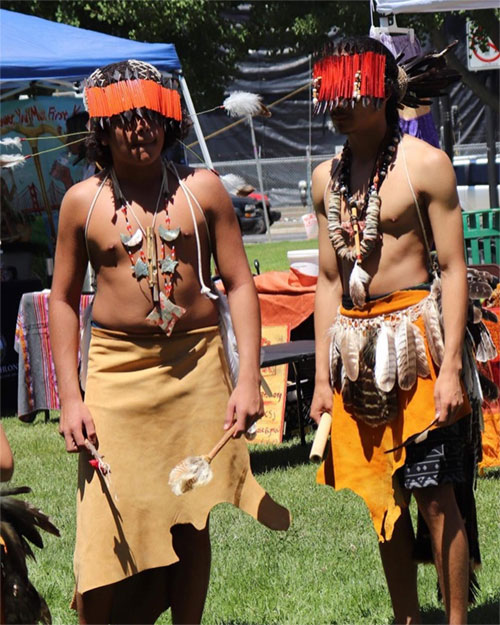 Popular mythology can be dangerous. Firstly, because it is “popular”, it is known by a huge number of people, most of whom think that what they have been told about Native Americans is true. The second is that mythology means beliefs based on hearsay with cultural biases, not facts. In other words, mythology means the perpetuation of misinformation and stereotypes.
Popular mythology can be dangerous. Firstly, because it is “popular”, it is known by a huge number of people, most of whom think that what they have been told about Native Americans is true. The second is that mythology means beliefs based on hearsay with cultural biases, not facts. In other words, mythology means the perpetuation of misinformation and stereotypes.
What Does Thanksgiving Mean to Native Americans?
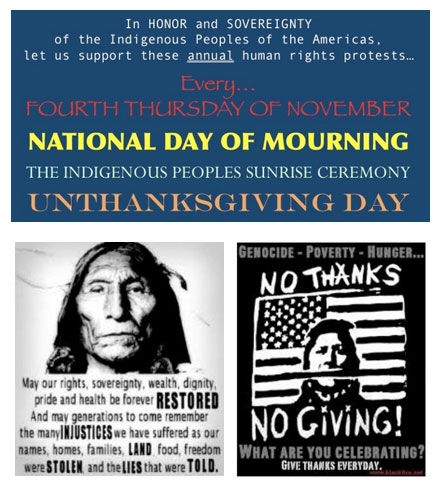
The fourth Thursday in November will be upon us soon. Thanksgiving is a uniquely American festival that also happens to mark the start of the holiday season. Now that COVID is (hopefully!) behind us and the world has returned to normal, it is a time for most Americans to properly celebrate the good things in life with their loved ones.
Native American Tribal Celebrations – Celebrating America
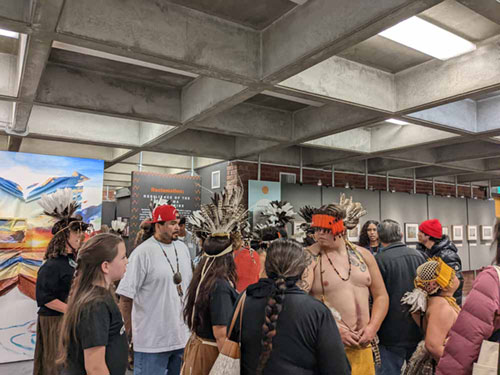 All societies have their rituals, festivals, and celebrations. The more varied the celebrations, the more inclusive the society. The U.S. may be a modern superpower and an economic giant, but it is still a comparatively young nation when compared to countries whose histories date back thousands of years.
All societies have their rituals, festivals, and celebrations. The more varied the celebrations, the more inclusive the society. The U.S. may be a modern superpower and an economic giant, but it is still a comparatively young nation when compared to countries whose histories date back thousands of years.
Native American Languages Must Be Saved from Extinction
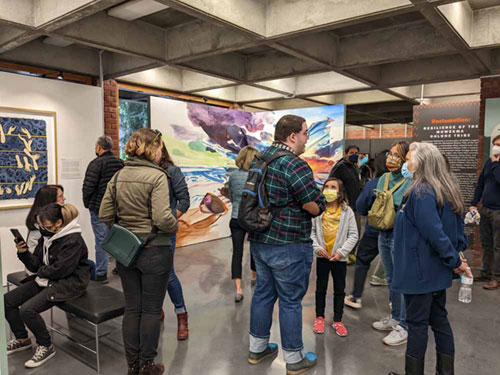 Communication is both the foundation and traditional knowledge base for serves as the cement that holds any society together. And while written communication, print and electronic media as well as the internet are the bonds that bind society together today, the foundation of it all, was verbal communication.
Communication is both the foundation and traditional knowledge base for serves as the cement that holds any society together. And while written communication, print and electronic media as well as the internet are the bonds that bind society together today, the foundation of it all, was verbal communication.
Perpetuating Prejudice: The Ongoing Struggle Faced by Native Americans
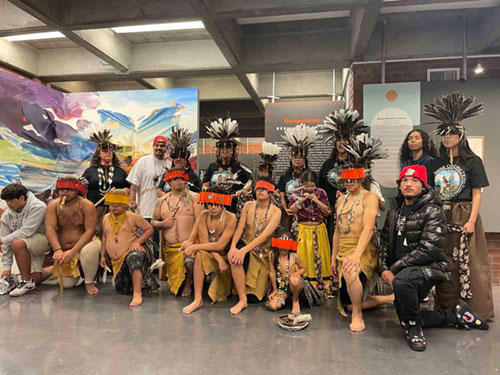 A study published a few years ago found that over 66% of Americans do not think that the Native people in this country experience any serious form of racial discrimination. This is far from the truth but before looking at why this myth exists, it is important to view the facts about prejudice against Native Americans.
A study published a few years ago found that over 66% of Americans do not think that the Native people in this country experience any serious form of racial discrimination. This is far from the truth but before looking at why this myth exists, it is important to view the facts about prejudice against Native Americans.
Tourism and Native American Communities: Evaluating the Pros and Cons
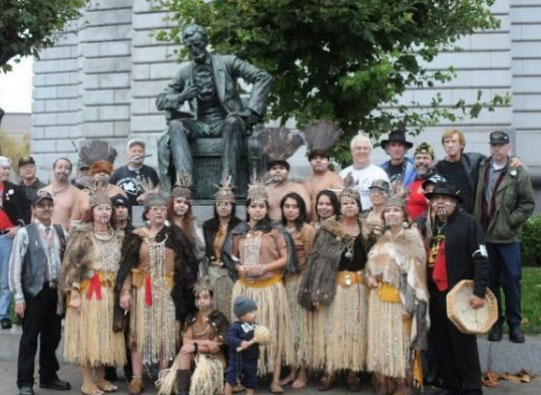 Summer is here and with it comes a desire to travel for pleasure – otherwise known as tourism. After years of COVID and lockdowns, the world is witnessing what is being called “revenge tourism” – the desire to go somewhere (at times just anywhere) to make up for the months and years spent stuck at home.
Summer is here and with it comes a desire to travel for pleasure – otherwise known as tourism. After years of COVID and lockdowns, the world is witnessing what is being called “revenge tourism” – the desire to go somewhere (at times just anywhere) to make up for the months and years spent stuck at home.
Why Tribal Land Management Is So Important forthe Environment
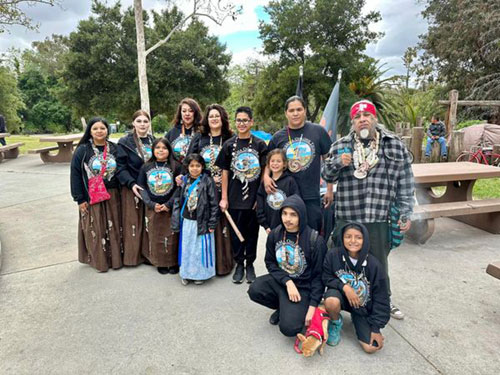 Across the world, science is turning to traditional knowledge to get a better understanding of the natural world and the environment in which mankind exists. From stopping the melting of the polar ice caps to protecting fish stocks and enriching agricultural land, traditional wisdom is leading to a deepening understanding of the causes and effects of environmental damage and is also pointing out ways to stop it.
Across the world, science is turning to traditional knowledge to get a better understanding of the natural world and the environment in which mankind exists. From stopping the melting of the polar ice caps to protecting fish stocks and enriching agricultural land, traditional wisdom is leading to a deepening understanding of the causes and effects of environmental damage and is also pointing out ways to stop it.
Frequently Asked Questions about our Products / Services
Why are native Americans called Indians or red Indians?
There is a widespread misconception that the Native American population of this country receives a large number of benefits that give them a privileged status. Nothing could be further from the truth. As U.S. Vice President Harris recently said, the history of the indigenous people of America, after the arrival of the European settlers, has been one of persecution, disease and destruction of their heritage and culture. In the last century, a feeling of guilt at the past has prompted some efforts to provide the Native Americans with some relief, but these efforts pale in comparison to the facts of history. Native Americans do not want special treatment -they want the pas to be acknowledged and to be given their rightful place in the America of today.
Are there any Native American tribes today that still live in their old ways in the USA, if so where are their territories?
It depends on what you mean by the old ways. As a Native American, I can say that we, all the Tribes and Nations, are part of the modern United States and live a 21st-century lifestyle. That being said, we have great respect for our traditional beliefs and ways of life and try to incorporate these values into the modern life we live. A look at a Native American Tribe’s website will explain this better.
Did America steal its land from the Native Americans?
This is a question that has caused divisions for generations. The simple answer is that yes, the land was stolen from the tribes. However, this may be too simplistic. The mindset of the European settlers was very different from what is acceptable and while many of them treated the natives with contempt, others thought that it was their duty to “civilize” them and force them to adopt European traditions, culture, and values. These were the value systems and beliefs prevalent in those times. The Muwekma Ohlone Tribe is one of the oldest tribes in North America and while we have suffered by having our land stolen, we have integrated and are proud Americans.
Why has the US not returned all of the stolen land back to the Native Americans?
The simple answer to this is “yes.” The European settlers who came to this country had no legal right to the land they occupied and claimed as their own. At the time of the colonization of North America, modern laws regarding property ownership did not exist and since might was right, the Native Tribes were driven from their traditional lands and homes and placed in small reservations where they lived for centuries. It is only in recent years that attempts started to be made to right the wrongs of the past, but returning the lands to the tribes will never happen because of the changed balance of the population.
Who lived in America before the natives?
If by the natives you mean the Native American tribes, the answer is that there is no historical record, proof or evidence that any people occupied the continent before them. While the origins of the Native Americans are still being discussed, it is now generally accepted that they originated in Asia and came to America many millennia ago across the land bridge on what is now the Bering Strait. The Native Americans are the first human inhabitants of the Americas. We are the Muwekma Ohlone Tribe our history goes back thousands of years, long before any “white men” came to this land.
What are the benefits of claiming Native American heritage?
The Muwekma Ohlone Tribe that lives in the San Francisco Bay Area is known to have lived in the region for thousands of years. They, along with other Native American Tribes are the first and original inhabitants of the Americas. The assumption that this gives them a special status and that they receive special benefits is a false one. Native Americans receive only the same benefits as other American citizens. That is all. It may come through different channels or be called other names, but the benefits are the same as everyone else. The only special benefit that comes from claiming Native American heritage is the pride that comes with it.
What does “tribal sovereignty” mean and why is it so important to Native Americans?
The concept of Tribal Sovereignty is one that the Muwekma Ohlone, along with other Native American Tribes, holds very dear. In essence, it means that it is “the inherent authority of tribes to govern themselves (and) allows tribes to honor and preserve their cultures and traditional ways of life. Tribal sovereignty also is a political status recognized by the federal government, protected by the U.S. Constitution and treaties made generations ago, and upheld by the U.S. Supreme Court.” While this makes the importance clear, the fact is that the Tribes and the government still continue to battle over jurisdiction and enforcement of the laws.
What is considered American Indian
Indian Americans, who are also known as Native Americans, are the original inhabitant of the Americas. They have lived here for between 15,000 and 30,000 years. They are the descendants of nomadic hunting tribes from northeast Asia who crossed the land bridge that is now the Bering Strait in search of better hunting lands. All the descendants of those original emigrants are Native Americans. While the intermingling of the natives and the European settlers resulted in generations of people having mixed bloodlines, those that have Native American ancestry and wish to call themselves American Indians may do so. We of the Muwekma Ohlone Tribe are welcoming of those who share our ancestry.
Where is the American Indian tribe from?
There is no single Native American Tribe. The first inhabitants of America were people who crossed the land bridge that existed in prehistory from Asia to North America. Once they reached the new continent, and the population increased, the people spread out over the land and broke into different tribes, each with its own distinct culture and identity. So while the origin of the people is the same, there is no one Native American Tribe. To understand this better, you can go to the website of the Muwekma Ohlone Tribe where you will find details information on the history, culture, present status of the tribe and much more.
Why do Native Americans and Asians have a similar appearance?
Being a Native American tribe, we know that there are some commonalities in our appearance and some, but not all, of the inhabitants of Asia. The reason for this is that many millennia ago, there was a land bridge over what is now the Bering Strait. During prehistoric times, tribes from Asia used this land bridge to migrate from their home continent to North America and became Native Americans. While the physical similarities have faded over time, some common features like the almond-shaped eyes, thick black hair on the head, sparse beards on men and little or no body hair for both sexes remain.
How Empowering Native Americans?
Empowering Native Americans is essential to creating a more just and equitable society. Native American communities have long been marginalized and oppressed, making it difficult for them to access the resources they need to thrive.
By empowering Native Americans, we can give them the tools they need to reclaim their cultures and livelihoods. This will not only benefit Native Americans, but all of us, as it will create a more inclusive and equitable society. Thank you for your question!
Is the Muwekma Ohlone Tribe federally recognized?
The Muwekma Ohlone Tribe is federally recognized. On October 30, 2008, the United States Department of the Interior published a notice in the Federal Register announcing federal recognition of the Muwekma Ohlone Tribe, restoring tribal membership and government to approximately 450 descendants of the San Francisco Bay Area's original inhabitants.
The tribe has worked for more than a decade to gain federal recognition. Restoration of tribal status allows the Muwekma Ohlone Tribe to reclaim its homeland and rebuild its culture and community. The tribe is now working to restore traditional ceremonies and practices, develop housing and social services for its members, and revive cultural knowledge that was lost generations ago.
What Language did the Ohlone tribe Speak?
The Muwekma Ohlone people, who are the indigenous people of the Bay Area, spoke a number of languages that are now extinct. Linguistic evidence suggests that their primary language was Costanoan, a branch of the Utian family of languages.
Today, many members of the Muwekma Ohlone tribe are working to restore their heritage and culture, including their lost language. There is an effort underway to create a dictionary and grammar book for the Costanoan language and to revive it as a spoken language. You can learn more about this effort at http://muwekma.org/.
What happened to the Muwekma Ohlone Tribe?
The Muwekma Ohlone Tribe, like many other Native American tribes, faced significant challenges and disruptions to their way of life as a result of European colonization and later American expansion. The tribe's military history includes conflicts with Spanish and Mexican colonizers in the 18th and 19th centuries. In the 20th century, the tribe was forced to relocate and their land was taken by the government through various policies. Many of their traditional practices, including their spiritual beliefs, were suppressed. Today, the tribe is working to preserve and revitalize its culture and heritage.
What was the first native American tribe?
It's difficult to determine the oldest Native American tribe as their histories and origins date back thousands of years. However, some of the oldest known tribes in California include the Chumash, Yurok, and Pomo tribes, all of which have a rich cultural heritage and have made significant contributions to the history and development of California. These tribes have faced significant challenges and struggle over the centuries, including displacement, cultural assimilation, and loss of land and resources. Despite these challenges, many Native American tribes in California and throughout the United States continue to thrive and maintain their unique cultural traditions and practices.
Who were the first tribes in America?
It is difficult to determine the specific first Native American tribes in America as they have been present on the continent for thousands of years. However, in California, some of the earliest known tribes include the Chumash, the Tongva, and the Ohlone. These tribes, along with many others, have a rich history and culture that has been impacted by the colonization and subsequent development of the region. Today, many Native American tribes in California and across the country continue to work towards preserving their culture and traditions while advocating for their rights and sovereignty.
What efforts are being made today to preserve the history and culture of the Ohlone tribe?
Today, there are various efforts being made to preserve the history and culture of the Ohlone tribe, including by the Muwekma Ohlone Tribe itself. The tribe has established the Muwekma Ohlone Cultural Center to promote and educate the public about their culture and history, and to provide resources for tribal members to learn about their ancestral traditions. The center offers programs on traditional arts and crafts, language, and cultural heritage.
Other organizations and institutions are also involved in efforts to preserve Ohlone history and culture. The California Missions Foundation has established the California Indian Heritage Center, which is dedicated to preserving the cultural heritage of all California tribes, including the Ohlone. The center houses a collection of artifacts and provides educational resources and programming to the public. Additionally, universities such as San Francisco State University and Stanford University have established programs and resources dedicated to the study and preservation of Native American cultures, including the Ohlone.
What are some traditional customs and ceremonies of the Ohlone tribe?
Here are some traditional customs and ceremonies of the Ohlone tribe:
Basket weaving: Basket weaving was an important tradition of the Ohlone. They used baskets for a variety of purposes, including gathering food, storing water, and carrying belongings.
Dance: Dance was another important tradition of the Ohlone. They danced for a variety of reasons, including celebrating important events, honoring their ancestors, and communicating with the spirit world.
Music: Music was also an important part of the Ohlone culture. They played a variety of instruments, including drums, rattles, and flutes.
Storytelling: Storytelling was a way for the Ohlone to pass on their history, culture, and values to their children. They told stories about their ancestors, the creation of the world, and the importance of living in harmony with nature.
Ceremonies: The Ohlone held a variety of ceremonies throughout the year. These ceremonies were often held to celebrate important events, such as the harvest or the coming of age of a young person. They also held ceremonies to honor their ancestors and to communicate with the spirit world.
These are just a few of the traditional customs and ceremonies of the Ohlone tribe. The Ohlone were a rich and vibrant culture, and their traditions continue to be celebrated today.
What are some of the challenges that the Ohlone people have faced in the past and present?
The Ohlone people have faced numerous challenges throughout their history and continue to confront various issues in the present. Some of these challenges include:
1. Colonization and Displacement: The arrival of European colonizers in the 18th century led to the colonization of Ohlone lands, resulting in forced displacement, loss of traditional territories, and disruption of their way of life.
2. Cultural Suppression and Assimilation: The Ohlone people experienced cultural suppression and attempts at assimilation through forced conversion to Christianity, prohibition of traditional practices, and the suppression of their languages, ceremonies, and customs.
3. Loss of Land and Resources: The encroachment of settlers and subsequent land dispossession caused a loss of access to traditional hunting, gathering, and fishing grounds, impacting the Ohlone's traditional subsistence practices and connection to the land.
4. Economic and Social Inequality: Historical and ongoing systemic inequalities have affected the Ohlone people's economic opportunities, educational access, and social standing, leading to socioeconomic disparities and marginalization within the wider society.
5. Environmental Degradation: The Ohlone people have witnessed the degradation of their ancestral lands due to urban development, pollution, and natural resource extraction, resulting in the loss of biodiversity and disruption of ecological balance.
6. Recognition and Representation: The struggle for recognition and representation of Ohlone history, culture, and rights remains an ongoing challenge. Efforts are being made to assert their sovereignty, reclaim cultural heritage, and secure tribal recognition and self-governance.
7. Cultural Revitalization: The revitalization of Ohlone culture, languages, and traditions poses a challenge due to historical disruptions and the scarcity of documented knowledge. Dedicated efforts are being made to preserve and revitalize their cultural heritage for future generations.
Despite these challenges, the Ohlone people have shown resilience and continue to work towards reclaiming their heritage, fostering community solidarity, and advocating for their rights as indigenous peoples.
What are some traditional events and celebrations of the Muwekma Ohlone Tribe?
Here are some traditional events and celebrations that were historically significant to the Muwekma Ohlone Tribe:
1. Acorn Harvest Celebrations: The Muwekma Ohlone, like many California tribes, traditionally relied on acorns as a staple food. Acorn harvest celebrations were held to mark the gathering and processing of acorns, an essential and symbolic event in their cultural calendar.
2. Seasonal Ceremonies: The Muwekma Ohlone Tribe had ceremonies and rituals to honor various seasons, such as the arrival of spring or the changing of the seasons, which were integral to their spiritual and cultural beliefs.
3. Coming of Age Rituals: Coming of age ceremonies were held to mark the transition of young individuals into adulthood within the community. These rituals played a vital role in passing down cultural knowledge and instilling a sense of responsibility and identity in the younger generation.
4. Dance and Music Gatherings: Dance and music were significant aspects of Muwekma Ohlone tribal events and celebrations. Traditional songs and dances were performed during various gatherings, emphasizing storytelling, cultural expression, and community bonding.
5. Tribal Festivals: The Muwekma Ohlone Tribe held festivals to celebrate significant events or occurrences, such as the return of migrating animals, bountiful harvests, or successful hunts.
6. Spiritual Ceremonies: The Muwekma Ohlone people had various spiritual ceremonies that honored their connection to the land, the environment, and the spiritual world. These ceremonies were performed to seek blessings, guidance, and harmony.
7. Gathering and Trading: Events, where different tribes came together for gatherings, trading, and social interactions, allowed the Muwekma Ohlone Tribe to strengthen bonds, share cultural knowledge, and exchange goods and resources.
It's important to note that these traditional events and celebrations were central to the Muwekma Ohlone Tribe's cultural heritage and were tied closely to their beliefs, practices, and connection with the land. As with many indigenous cultures, these traditions were passed down through generations and held significant importance in maintaining the tribe's identity and sense of community.
How has the passage of time and modern influences shaped the evolution of Muwekma Ohlone tribal events and celebrations?
Muwekma Ohlone Tribal events and celebrations have evolved over time due to changing social dynamics and modern influences. Traditional practices persist but are now infused with contemporary elements, reflecting the tribe's adaptability. Colonial history, urbanization, and cultural exchange have impacted the way rituals are observed and shared. While some ceremonies remain integral to preserving ancestral heritage, newer events emerge to address current challenges and celebrate collective identity. The passage of time and external factors have thus led to a dynamic fusion of tradition and modernity within Muwekma Ohlone Tribal events and celebrations, showcasing the tribe's resilience and cultural continuity.
How can individuals and organizations support the Muwekma Ohlone Tribe in their cultural preservation efforts?
Supporting the Muwekma Ohlone Tribe in their cultural preservation efforts can be done in various ways.
1. Participation: Attend Muwekma Ohlone Tribal events and celebrations to learn about their culture, traditions, and history. This shows solidarity and genuine interest in their heritage.
2. Donations: Contribute to their cultural preservation initiatives by making financial donations. This can help fund language revitalization programs, cultural centers, and educational resources.
3. Advocacy: Raise awareness about the tribe's cultural preservation efforts by sharing their stories and achievements on social media and with local communities.
4. Volunteer: Offer your time and skills to support their initiatives, whether it's organizing events, helping with language programs, or assisting with cultural exhibitions.
5. Respect: Show respect for their cultural heritage by acknowledging their history and land rights, and by addressing cultural appropriation issues.
6. Collaboration: Collaborate with Muwekma Ohlone organizations and individuals to facilitate mutual cultural exchange and understanding.
Supporting the Muwekma Ohlone Tribe's cultural preservation efforts involves a combination of involvement, financial aid, and respect for their heritage. It's crucial to honor their traditions and collaborate in ways that they find meaningful and respectful.
What historical factors and events have contributed to the challenges in re-establishing Muwekma Ohlone tribal identity?
Challenges in Re-establishing Muwekma Ohlone Tribal Identity are deeply rooted in historical factors and events that have significantly impacted the community:
1. Colonialism and Land Dispossession: The arrival of European colonizers led to the loss of ancestral lands, disrupting the Muwekma Ohlone's connection to their territories and traditional ways of life. Forced relocation and land seizures caused a disconnection from cultural practices tied to specific landscapes.
2. Forced Assimilation: The era of forced assimilation policies, including the establishment of missions, boarding schools, and forced religious conversion, aimed to erase indigenous cultures. This led to the suppression of language, cultural practices, and traditional knowledge within the Muwekma Ohlone community.
3. Lack of Recognition and Rights: Historical neglect by federal and state governments in recognizing the Muwekma Ohlone Tribe has resulted in the denial of rights and resources crucial for cultural preservation and identity reclamation.
4. Fragmentation of Community: Displacement and societal pressures led to the scattering of Muwekma Ohlone descendants across various regions. This dispersion disrupted traditional community structures, making it challenging to maintain cohesive cultural practices and identity.
5. Limited Documentation and Historical Records: Sparse documentation of Muwekma Ohlone history and culture, compounded by the lack of written records from their perspective, presents challenges in piecing together and validating their historical narrative.
6. Cultural Loss and Stigmatization: Generations of cultural suppression have led to a loss of traditional practices, language, and knowledge. Additionally, societal stigmatization and stereotypes have affected the perception of the Muwekma Ohlone identity.
These historical factors collectively pose significant hurdles in the re-establishment of Muwekma Ohlone tribal identity, necessitating concerted efforts to overcome challenges, reclaim cultural heritage, and revive a sense of identity and belonging within the community.
What are the primary challenges faced by the Muwekma Ohlone Tribe in re-establishing their tribal identity?
Challenges in Re-establishing Muwekma Ohlone Tribal Identity include:
1. Historical Displacement and Erasure: Centuries of colonization, displacement, and assimilation policies have disrupted their cultural practices, eroded traditional knowledge, and severed connections to ancestral lands.
2. Recognition and Legal Status: Gaining federal recognition as a sovereign tribe is a significant hurdle, impacting access to resources, land rights, and cultural preservation efforts.
3. Cultural Revitalization: Reclaiming and preserving language, traditions, and cultural practices in the face of historical suppression and loss poses a significant challenge.
4. Community Cohesion: Reconnecting dispersed community members and building a cohesive identity among diverse generations and locations is a complex undertaking.
5. Advocacy and Support: Securing support from government entities, garnering public awareness, and overcoming bureaucratic barriers require sustained advocacy efforts.
Addressing these challenges involves collaboration within the tribe, partnerships with supportive communities, advocating for legal recognition, cultural preservation initiatives, and education to reclaim and preserve their rich heritage.
How has Stanford addressed its historical ties to Native Peoples?
Stanford University has taken steps to address its historical ties to Native Peoples through initiatives and acknowledgments under the umbrella term "Stanford's Relationships With Native Peoples." One key effort involves recognizing the university's history and the impact it had on indigenous communities. Stanford has acknowledged that the university's founding father, Leland Stanford, held discriminatory views and enacted policies that contributed to the dispossession of Native American lands.
To address these historical ties, Stanford has engaged in ongoing dialogue and collaboration with Native American communities. The university actively seeks input and perspectives from Native Peoples to better understand their experiences, concerns, and aspirations. This collaborative approach is crucial in fostering respectful and mutually beneficial relationships.
In terms of academic programs and resources, Stanford has developed initiatives to promote the study of Native American history, culture, and contemporary issues. These efforts contribute to a more inclusive and accurate representation of Native Peoples within the university's curriculum and research endeavors.
Furthermore, Stanford has implemented community outreach programs and partnerships with Native American organizations. These initiatives aim to support Native students, create a more welcoming campus environment, and contribute to the broader goal of reconciliation. Through scholarships, mentorship programs, and cultural events, Stanford seeks to strengthen its ties with Native Peoples and provide support for their educational journeys.
As part of its commitment to addressing historical ties, Stanford has also invested in the creation of public art and memorials that recognize the contributions and resilience of Native Peoples. These installations serve as a visible reminder of the university's acknowledgment of its past and its dedication to fostering positive relationships with Native communities.
While progress has been made, Stanford recognizes that there is still work to be done. Continued efforts to listen, learn, and collaborate with Native Peoples underscore the university's commitment to addressing its historical ties responsibly and working towards a more inclusive and equitable future.
What are the key geographical features highlighted on the Muwekma Ohlone Map?
The Muwekma Ohlone Map highlights several key geographical features that are significant to the Muwekma Ohlone people's ancestral lands. These features include:
1. San Francisco Bay: The map likely delineates the expansive San Francisco Bay, a prominent natural landmark that has historically served as a central hub for Ohlone communities and activities.
2. Monterey Bay: Another significant geographic feature highlighted on the map is Monterey Bay, located to the south of San Francisco Bay. This bay area holds cultural and historical importance to the Muwekma Ohlone people.
3. Rivers and Waterways: Various rivers and waterways may be depicted on the map, as they were essential for transportation, sustenance, and cultural practices of the Muwekma Ohlone people.
4. Mountains and Hills: The map may also showcase notable mountains, hills, and other landforms that hold spiritual significance or served as navigational landmarks for the Muwekma Ohlone communities.
5. Villages and Settlements: The map likely identifies the locations of Ohlone villages and settlements, providing insights into the distribution and organization of Muwekma Ohlone communities across their ancestral lands.
6. Sacred Sites: Additionally, the map may highlight sacred sites, ceremonial grounds, and other culturally significant areas that are integral to the spiritual practices and identity of the Muwekma Ohlone people.
Overall, these geographical features serve to contextualize the historical and cultural connections of the Muwekma Ohlone people to their ancestral lands, providing valuable insights into their traditional lifeways and relationship with the environment.
What initiatives or programs has Stanford University implemented to support and engage with Native Peoples?
Stanford's Relationships with Native Peoples encompasses several initiatives and programs aimed at supporting and engaging with Indigenous communities. One notable effort is the Native American Cultural Center (NACC), established to provide a welcoming space for Native students and promote cultural awareness on campus. Additionally, Stanford hosts the Stanford Indigenous Research Institute (SIRI), which fosters collaborative research and partnerships with Native communities to address pressing issues. The university also offers academic programs such as Native American Studies, providing opportunities for students to explore Indigenous histories, cultures, and contemporary issues. Furthermore, Stanford actively recruits and supports Native students through initiatives like the Native American Outreach Program, which offers resources and guidance for college preparation. These efforts reflect Stanford's commitment to building meaningful relationships with Native Peoples and advancing Indigenous scholarship and representation within the university community and beyond.
How does the Muwekma Ohlone community continue to preserve its identity and heritage despite challenges?
Despite challenges, the Muwekma Ohlone community exhibits remarkable resilience in preserving its identity and heritage. Through cultural revitalization programs, such as language revitalization efforts and traditional arts workshops, they pass down ancestral knowledge to future generations. Engaging in ceremonial practices and cultural gatherings fosters connections to their land and ancestors. Legal advocacy initiatives protect sacred sites and advocate for indigenous rights. Collaborations with educational institutions ensure accurate representation of Muwekma Ohlone history and culture. These multifaceted efforts demonstrate the resilience of the Muwekma Ohlone community, affirming their commitment to cultural survival and sovereignty amidst ongoing challenges.
What challenges has the Muwekma Ohlone community faced historically?
Throughout history, the Muwekma Ohlone community has faced numerous challenges, including colonization, displacement, forced assimilation, and loss of cultural identity. The arrival of European colonizers and the establishment of missions led to the disruption of traditional ways of life, loss of land, and forced conversion to Christianity. Additionally, discriminatory policies, such as the Indian Removal Act and the California Indian Judgement Roll, further marginalized and disenfranchised the Ohlone people.
Despite these adversities, the resilience of the Muwekma Ohlone community has remained steadfast. Through generations of struggle and resistance, they have preserved their cultural heritage, maintained connections to their ancestral lands, and fought for recognition and justice. Today, the Muwekma Ohlone community continues to assert their sovereignty, advocate for their rights, and revitalize their traditions, embodying the enduring strength and resilience of indigenous peoples.
What initiatives or actions can be taken to honor the history and contributions of the Muwekma Ohlone people?
To honor the history and contributions of the Muwekma Ohlone people, several initiatives can be implemented. One effective action is the establishment of educational programs in schools and community centers. These programs can teach the rich history, culture, and ongoing contributions of the Muwekma Ohlone people, fostering a deeper understanding and appreciation among residents.
Creating public art installations and monuments is another way to show respect, honor, and solidarity with the Muwekma Ohlone community. These physical reminders can highlight significant events, figures, and cultural practices, ensuring that their legacy is visible and acknowledged in everyday life.
Collaborative projects with the Muwekma Ohlone community are also crucial. This can include co-hosting cultural festivals, supporting indigenous-led environmental conservation efforts, and incorporating traditional knowledge into local sustainability practices.
Furthermore, land acknowledgments at public events and in official documents can continuously remind people of the Muwekma Ohlone's enduring presence and rights to their ancestral lands. These initiatives collectively promote recognition and respect for the Muwekma Ohlone community.
How has the Muwekma Ohlone community adapted to modern societal changes?
The resilience of the Muwekma Ohlone community is evident in their adaptive strategies to modern societal changes while preserving their cultural heritage. Despite facing centuries of colonization and marginalization, the Muwekma Ohlone have actively engaged in cultural revitalization and advocacy. They have embraced modern tools and technologies to document and teach their language, history, and traditions, ensuring that younger generations remain connected to their roots.
Additionally, the community has formed alliances with academic institutions and participated in archaeological and anthropological research to reclaim and assert their historical presence in the San Francisco Bay Area. This scholarly collaboration has not only bolstered their cultural identity but also provided a platform for legal and political recognition. By participating in contemporary education, employment, and governance structures, the Muwekma Ohlone have effectively integrated into modern society while steadfastly pursuing their rights and heritage. This dual approach underscores their resilience and adaptability in navigating the complexities of the modern world.
How does the Ohlone Tribe practice environmental stewardship?
The Ohlone Tribe practices environmental stewardship through a combination of traditional ecological knowledge and modern conservation strategies. Their efforts focus on restoring and maintaining the health of their ancestral lands, which include diverse ecosystems such as forests, wetlands, and coastal areas. One key aspect of Muwekma Ohlone Tribe environmental stewardship is the restoration of native plant species. By reintroducing indigenous flora, the tribe helps to preserve biodiversity and support local wildlife habitats.
In addition, the tribe actively protects water sources, recognizing their vital role in sustaining both the environment and community well-being. This involves monitoring water quality and advocating against pollution and over-extraction. The Muwekma Ohlone also engage in sustainable land management practices, such as controlled burns, which have been used for centuries to prevent wildfires and promote the growth of certain plant species.
Through educational programs and community involvement, the Muwekma Ohlone Tribe fosters a deeper understanding and respect for the environment, ensuring that their stewardship practices are passed down to future generations. This holistic approach to environmental stewardship reflects their enduring connection to the land and their commitment to its preservation.
What role do Ohlone Tribe elders play in youth initiatives?
Ohlone Tribe elders play a crucial role in the Muwekma Ohlone Tribe youth initiatives by serving as the primary custodians of cultural knowledge and traditions. Their involvement is essential for passing down traditional practices, stories, and values to younger generations. Elders provide guidance and mentorship, sharing their wisdom through storytelling, ceremonies, and hands-on teaching of traditional crafts and skills.
In the Muwekma Ohlone Tribe youth initiatives, elders help bridge the gap between the past and present, ensuring that cultural heritage is preserved and celebrated. They lead educational workshops and participate in cultural events, creating opportunities for youth to engage with their history and identity. Their presence and participation reinforce the importance of cultural continuity and strengthen community bonds, helping the younger generation develop a deep connection to their heritage and a sense of responsibility for its preservation.
How can I learn more about Native American art and culture?
To learn more about Native American art and culture, there are several enriching resources and experiences you can explore. Visiting museums dedicated to Native American culture, such as the National Museum of the American Indian in Washington, D.C., is a great starting point. These institutions often feature extensive collections of traditional and contemporary Native American art, alongside educational exhibits on tribal history and cultural practices.
Reading books by Native American authors is another effective way to gain insight. Writers like Louise Erdrich and N. Scott Momaday offer deep perspectives on Native American culture, history, and identity. You can also engage with documentaries and podcasts that focus on Native American history, art, and contemporary issues.
Attending powwows, festivals, or local cultural events allows you to experience Native American culture firsthand. These gatherings often feature traditional music, dance, and crafts, providing a more immersive understanding of the rich cultural heritage Native Americans continue to uphold.
How does Native American culture vary among different tribes?
Native American Culture varies significantly among different tribes, reflecting the diverse environments, histories, and beliefs of each group. For instance, the Plains tribes, such as the Lakota and Cheyenne, are known for their nomadic lifestyles and reliance on buffalo hunting, shaping their art, clothing, and spiritual practices. In contrast, the Pueblo tribes of the Southwest, like the Hopi and Zuni, are more settled and have traditions rooted in agriculture, cultivating crops like corn, beans, and squash. Their unique adobe architecture and intricate pottery are central to their culture.
The spiritual practices also differ widely. Some tribes, like the Navajo, have complex ceremonies and sand painting rituals for healing, while others, like the Iroquois, celebrate communal gatherings and decision-making through their Great Law of Peace. Language, too, varies across tribes, with hundreds of distinct Native languages spoken historically. These differences highlight the rich tapestry of Native American Culture, shaped by geography and tribal traditions.
How do Native American values impact community life?
In Native American culture, values like respect, interconnectedness, and collective responsibility deeply influence community life. A key value is respect for all beings, which extends beyond human relationships to include animals, plants, and the land itself. This sense of respect nurtures an environment where individuals act not only in their own interest but in consideration of the broader community and natural world, fostering a harmonious and sustainable lifestyle.
The emphasis on interconnectedness in Native American culture also reinforces strong community bonds. Elders are respected as wisdom keepers, and family structures often extend beyond immediate relatives, creating a sense of extended family within the community. This builds a support network where members look out for each other’s well-being, reinforcing unity and resilience.
Collective responsibility is also central, with the needs of the group often prioritized over individual desires. This approach promotes cooperation, shared resources, and a communal mindset that strengthens community life.
What were the causes of European colonial conflicts?
The causes of European Colonial Conflicts were rooted in competition for resources, territorial expansion, and power struggles among European nations. As countries like Britain, France, Spain, and the Netherlands sought to expand their empires, they clashed over control of valuable territories in the Americas, Africa, and Asia. These regions offered access to lucrative trade routes, natural resources, and strategic military positions, making them focal points of rivalry.
Religious and cultural differences also fueled tensions. Catholic and Protestant nations often used colonial expansion to spread their faith, which led to clashes between settlers and Indigenous populations or rival European colonizers. Economic motivations, such as the race to dominate the fur trade in North America or control spice routes in Asia, further intensified hostilities.
These conflicts extended to alliances with Native populations, who were drawn into European power struggles. Ultimately, European Colonial Conflicts were driven by the desire for dominance in a rapidly globalizing world.
Can the Muwekma Ohlone map be used for cultural education and awareness?
Yes, the Muwekma Ohlone map can be an invaluable resource for cultural education and awareness. The Ohlone Map highlights the ancestral lands and territories of the Muwekma Ohlone people, providing a visual representation of their historical connection to the Bay Area. By incorporating the map into educational programs, schools, and community events, it offers an opportunity to teach about the deep-rooted history, culture, and traditions of the Ohlone people. This map serves as a tool for raising awareness about the indigenous presence in the region, fostering respect for their ongoing cultural contributions. It also helps correct historical narratives by illustrating the importance of land stewardship and the Ohlone's relationship with the environment. The Ohlone Map not only enhances understanding of Native American history but also promotes broader conversations about cultural preservation and the resilience of indigenous communities.
What is the history of the Ohlone people and their land?
The Ohlone people are the Indigenous inhabitants of the San Francisco Bay Area, with a history spanning thousands of years. They lived in harmony with the land, practicing sustainable hunting, fishing, and gathering while maintaining strong cultural traditions. Their society was organized into several tribal groups, each with its own language and customs. However, European colonization in the 18th century, beginning with Spanish missions, disrupted their way of life. Forced labor, disease, and land dispossession drastically reduced their population and severed their connection to their ancestral territory
Today, efforts such as the Ohlone Land Acknowledgement recognize the enduring presence and resilience of the Ohlone people. While land acknowledgments raise awareness, the movement to return land provides a tangible step toward justice. By reclaiming their land, the Ohlone people can continue cultural revitalization, strengthen their community, and preserve their heritage for future generations, ensuring their rightful place in history and society.
Why are tribal traditions important to cultural identity?
Tribal traditions are vital to cultural identity because they preserve the values, beliefs, and history that define a community. For Native American tribes, Tribal Customs and Traditions provide a strong sense of belonging and continuity, linking present generations to their ancestors and ancestral lands. These customs often include language, storytelling, ceremonies, and spiritual practices that reinforce collective memory and cultural pride.
By practicing Tribal Customs and Traditions, communities maintain their unique worldview and resist cultural erasure caused by colonization and assimilation. These traditions also serve as educational tools, teaching younger generations about respect, responsibility, and the sacred relationship between people and nature. In a world that often pressures individuals to conform to dominant cultures, tribal traditions offer a powerful anchor to identity. They empower individuals to celebrate who they are, fostering unity and resilience within the tribe. Ultimately, these traditions are the foundation upon which cultural identity is built and sustained.
What are some common tribal customs and traditions?
Tribal customs and traditions vary widely across the world, but many share common themes rooted in nature, community, and spirituality. Ceremonial rituals are a key part of tribal life—whether it’s birth, marriage, or initiation into adulthood, most tribes mark these life stages with music, dance, and symbolic acts. Storytelling is another deeply embedded tradition, often used to pass down ancestral wisdom, myths, and values from generation to generation.
In many tribes, customs around dress, tattoos, or body art hold cultural significance and indicate social roles, achievements, or spiritual beliefs. Hunting, harvesting, and seasonal festivals are also guided by customs that reflect harmony with nature and the environment.
When studying tribal customs and traditions, you’ll notice how these practices shape identity and reinforce unity within the tribe. They’re not just rituals—they’re living expressions of heritage, resilience, and the unique worldview each tribal community brings to the broader human story.
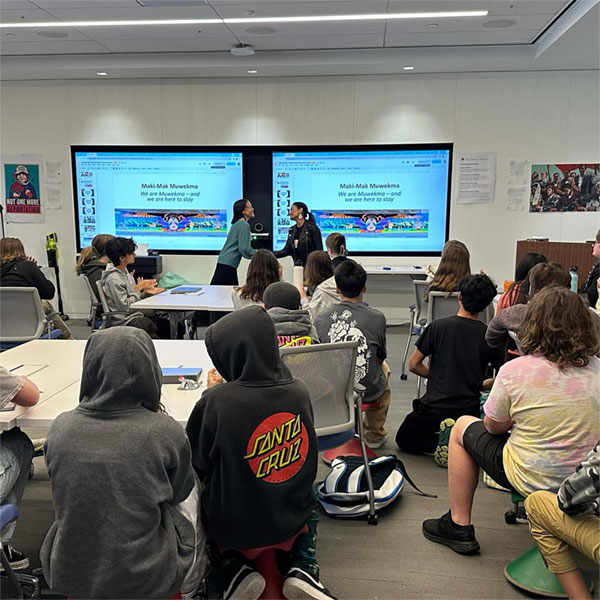 Stanford ranks among the best and most prestigious of American universities. Admission is limited to the brightest students. The education that students receive here is the best in the world.
Stanford ranks among the best and most prestigious of American universities. Admission is limited to the brightest students. The education that students receive here is the best in the world. 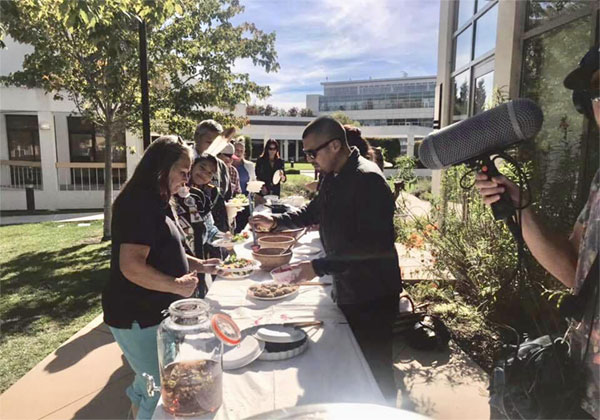 Among the most common New Year resolutions is the one of losing weight. Obesity and diabetes are becoming a national health concern, it is time to rethink our relationship with food. Native American a national health concern and we all know it.
Among the most common New Year resolutions is the one of losing weight. Obesity and diabetes are becoming a national health concern, it is time to rethink our relationship with food. Native American a national health concern and we all know it.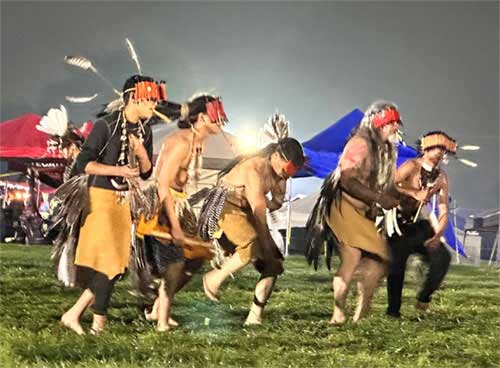
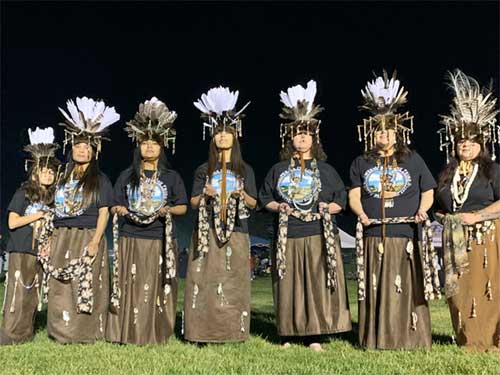
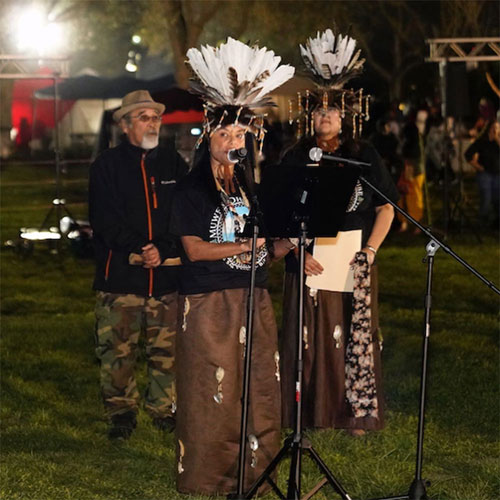 Christopher Columbus set out from Spain to find a route to India to gain access to the fabled spices and wealth that the region was known for. As we now know, he landed up in a “New World” that did not offer him gold, silver, or spices, but did have something far more important.
Christopher Columbus set out from Spain to find a route to India to gain access to the fabled spices and wealth that the region was known for. As we now know, he landed up in a “New World” that did not offer him gold, silver, or spices, but did have something far more important.